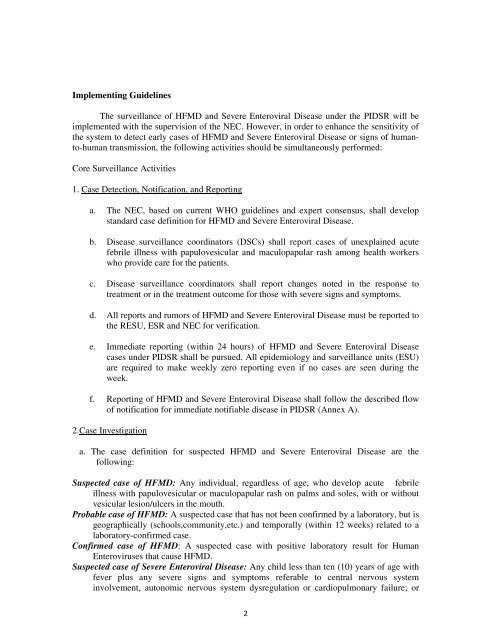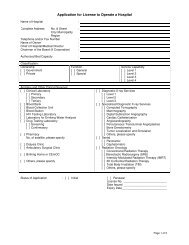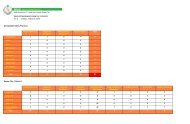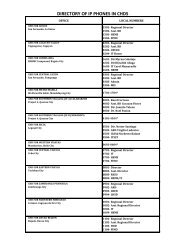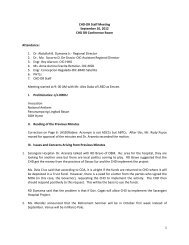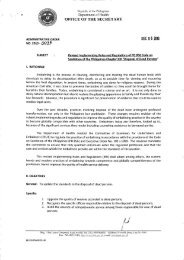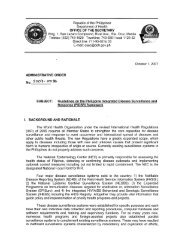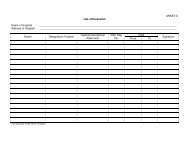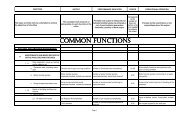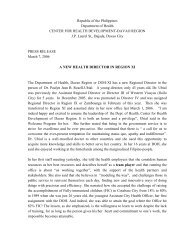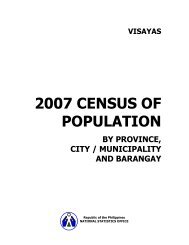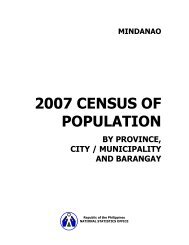Interim Guidelines on Surveillance of HFMD - CHD-Davao Region
Interim Guidelines on Surveillance of HFMD - CHD-Davao Region
Interim Guidelines on Surveillance of HFMD - CHD-Davao Region
You also want an ePaper? Increase the reach of your titles
YUMPU automatically turns print PDFs into web optimized ePapers that Google loves.
Implementing <str<strong>on</strong>g>Guidelines</str<strong>on</strong>g>The surveillance <strong>of</strong> <strong>HFMD</strong> and Severe Enteroviral Disease under the PIDSR will beimplemented with the supervisi<strong>on</strong> <strong>of</strong> the NEC. However, in order to enhance the sensitivity <strong>of</strong>the system to detect early cases <strong>of</strong> <strong>HFMD</strong> and Severe Enteroviral Disease or signs <strong>of</strong> humanto-humantransmissi<strong>on</strong>, the following activities should be simultaneously performed:Core <strong>Surveillance</strong> Activities1. Case Detecti<strong>on</strong>, Notificati<strong>on</strong>, and Reportinga. The NEC, based <strong>on</strong> current WHO guidelines and expert c<strong>on</strong>sensus, shall developstandard case definiti<strong>on</strong> for <strong>HFMD</strong> and Severe Enteroviral Disease.b. Disease surveillance coordinators (DSCs) shall report cases <strong>of</strong> unexplained acutefebrile illness with papulovesicular and maculopapular rash am<strong>on</strong>g health workerswho provide care for the patients.c. Disease surveillance coordinators shall report changes noted in the resp<strong>on</strong>se totreatment or in the treatment outcome for those with severe signs and symptoms.d. All reports and rumors <strong>of</strong> <strong>HFMD</strong> and Severe Enteroviral Disease must be reported tothe RESU, ESR and NEC for verificati<strong>on</strong>.e. Immediate reporting (within 24 hours) <strong>of</strong> <strong>HFMD</strong> and Severe Enteroviral Diseasecases under PIDSR shall be pursued. All epidemiology and surveillance units (ESU)are required to make weekly zero reporting even if no cases are seen during theweek.f. Reporting <strong>of</strong> <strong>HFMD</strong> and Severe Enteroviral Disease shall follow the described flow<strong>of</strong> notificati<strong>on</strong> for immediate notifiable disease in PIDSR (Annex A).2.Case Investigati<strong>on</strong>a. The case definiti<strong>on</strong> for suspected <strong>HFMD</strong> and Severe Enteroviral Disease are thefollowing:Suspected case <strong>of</strong> <strong>HFMD</strong>: Any individual, regardless <strong>of</strong> age, who develop acute febrileillness with papulovesicular or maculopapular rash <strong>on</strong> palms and soles, with or withoutvesicular lesi<strong>on</strong>/ulcers in the mouth.Probable case <strong>of</strong> <strong>HFMD</strong>: A suspected case that has not been c<strong>on</strong>firmed by a laboratory, but isgeographically (schools,community,etc.) and temporally (within 12 weeks) related to alaboratory-c<strong>on</strong>firmed case.C<strong>on</strong>firmed case <strong>of</strong> <strong>HFMD</strong>: A suspected case with positive laboratory result for HumanEnteroviruses that cause <strong>HFMD</strong>.Suspected case <strong>of</strong> Severe Enteroviral Disease: Any child less than ten (10) years <strong>of</strong> age withfever plus any severe signs and symptoms referable to central nervous systeminvolvement, aut<strong>on</strong>omic nervous system dysregulati<strong>on</strong> or cardiopulm<strong>on</strong>ary failure; or2


